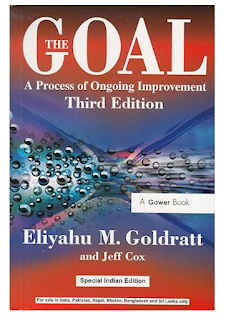Book Review: Never Split the Difference: Negotiating As If Your Life Depended On It" by Chris Voss
Negotiation is a fundamental aspect of human interaction, extending far beyond formal business dealings. It's a skill that permeates various aspects of life, from resolving conflicts in personal relationships to striking deals in professional settings. At its core, negotiation is about finding common ground, seeking mutually beneficial solutions, and navigating differences in a constructive manner. It's not just about reaching an agreement but also about building relationships and understanding differing perspectives.
Mastering negotiation
skills empowers individuals to navigate complexities, solve problems
creatively, and forge connections that can lead to successful outcomes in
various facets of life. Ultimately, effective negotiation fosters
collaboration, harmony, and progress in both personal and professional realms.
"Never Split the Difference" is a negotiation book by former FBI
hostage negotiator Chris Voss. The book outlines negotiation strategies and
techniques based on Voss's experiences in high-stakes negotiations. Here are
some key techniques discussed in the book:
1. Mirroring:
"Your goal is to
gain the trust of your counterpart. The only way to do that is to mirror,
label, or summarize what they're saying. If you don’t practice this simple act
of respect, you will struggle to connect."
Mirroring
involves repeating the last few words or the core content of what the other
person just said. This technique helps in multiple ways. First, it encourages
the other party to continue speaking, providing more information that might be
valuable in the negotiation. Second, it establishes rapport by showing that you're
actively listening and engaging with their words. Third, it often leads the
other person to rephrase or clarify their thoughts, which can reveal underlying
motivations or concerns.
2. Labeling:
"Labeling allows
us to reinforce positive feelings and divert negative ones. By labeling their
emotions, we acknowledge them and show our understanding, which helps in
diffusing tension."
Labeling
is the act of recognizing and verbalizing the emotions or thoughts the other
person might be experiencing. By acknowledging their emotions, you show empathy
and understanding. This can help de-escalate tense situations and create a more
conducive environment for productive discussions. Labeling emotions can also
help in guiding the conversation towards mutually beneficial solutions.
3. Tactical Empathy:
"Tactical empathy is
understanding the feelings and mindset of your counterpart to create a
connection. It's not about sympathy; it's a tool for effective
communication."
Tactical
empathy involves understanding the perspective of the other party deeply. It's
not just about being empathetic for the sake of it; it's about using empathy
strategically to influence the negotiation positively. Understanding the
emotions, needs, and concerns of the other party allows you to build trust and
rapport, which are crucial for reaching agreements.
4. Calibrated Questions:
"Calibrated
questions allow us to gather information and guide the conversation without
imposing. They are designed to encourage the other party to open up and provide
insights."
Calibrated
questions are open-ended queries that encourage the other party to elaborate or
provide more information. By using questions that start with "what"
or "how," negotiators can guide the conversation, gain insights into
the other party's motivations, and uncover potential solutions that might not
have been apparent initially.
5. The Power of Silence:
"Silence is a
powerful tool in negotiation. It can prompt the other party to offer more
information, reconsider their position, or fill the gap in the
conversation."
Silence is
a potent tool in negotiation. It's uncomfortable for many people, and in that
discomfort, they might reveal more than they intended. Silence also gives the
other party time to reflect, reconsider their position, or offer more
information. It can be particularly effective after making a proposal or asking
a challenging question.
These
techniques are not about manipulation but rather about fostering genuine
understanding, communication, and trust. They aim to create a negotiation
environment where both parties feel heard, valued, and understood, ultimately
leading to better outcomes for everyone involved.


Comments
Post a Comment